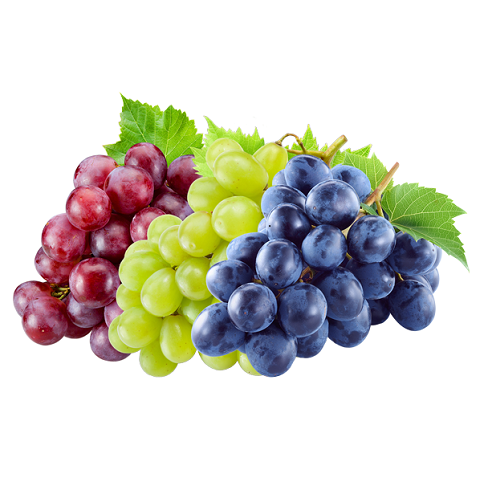| Disease / pest | Damage stage | Management / Chemical | Organic |
|---|---|---|---|

|
|
|
- Home
- शेतकऱ्यांसाठी माहिती
- Fruits
- द्राक्षे
द्राक्षे
- Farmer Knowledge
- Nutrients
- Pests
- test
| Life Cycle Of Pest: |  |
 |
 |
 |
|---|---|---|---|---|
| Description: | Stage 1: Egg | Stage 2: Larvae | Stage 3: Pupae | Stage 4: Adult |
| Mark Of Identification: | ||||
|
Life Cycle: |
Management (Pest Control):
| Chemical: | Spraying of fruit bunches with 0.2% dichlorovos in combination with fish oil rosin soap @ 2.5g/lit or sandovit 1-2 ml / lit (Wetting and sticking agent).
Release of exotic predator Cryptolaemus montrouzieri Mu @ 2500 – 3750/ha. 2-3 spraying with verticellium lecani (Bugicide) 5gm +5 ml milk/10 lits of water at 10-12 days interval wfhen the temperature is less than 30 0C & relative humidity is more than 65% is found effective in controlling the mealy bugs effectively. |
|---|---|
| Organic: | Spray G Agro Lecanicillium 5gm/lit + G Agro Metarohizium 5ml/lit 2 to 3 spray at 21 days interval. |
|
Crop Stage Images |
||||||
|---|---|---|---|---|---|---|
| Crop Stage | Germination | Transplanting to plant establish stage | Vegetative Stage | Flower Initiation to 1st picking | Harvesting | |
| Duration (in days) |
10 | 30 | 30 | 80 | ||
|
Nutrients (Kg/ha) |
N | 20 | 80 | 60 | 40 | |
| P | 7.50 | 15 | 7.50 | 7.50 | ||
| K | 10 | 40 | 30 | 20 | ||
| Life Cycle Of Pest: |  |
 |
 |
 |
|---|---|---|---|---|
| Description: | Stage 1: Egg | Stage 2: Larvae | Stage 3: Pupae | Stage 4: Adult |
| Mark Of Identification: | ||||
|
Life Cycle: |
Management (Pest Control):
| Chemical: | Spray with 0.05% malathion or 0.02% phosphamidon or 0.03% dimethoate. First spraying immediately after pruning and second spraying 10 days after sprouting. |
|---|---|
| Organic: | Spray G Agro Beauveria 5gm/lit 2 to 3 spray at 21 days interval. |
| Life Cycle Of Pest: |  |
 |
 |
 |
|---|---|---|---|---|
| Description: | Stage 1: Egg | Stage 2: Larvae | Stage 3: Nymphs | Stage 4: Adult |
| Mark Of Identification: | ||||
|
Life Cycle: |
Management (Pest Control):
| Chemical: | Spray with 0.03% dimethoate or 0.02% phosphamidon or thiamethoxam 25 WG 3 gms or spinosad 45 SP 3 ml or fipronil 5% SC 15 ml in 10 lits of water at 15 days interval, first spray immediately after pruning in April and October.
Spray with cytraniprol @ 10.26 OD, Emmamectin Benzoate @ 5.00 SG, Lambda cyhalothrin 4.9 CS, Fipronil 80 WG,, first spray immediately after pruning in April and October. |
|---|---|
| Organic: | Spray G Agro Lecanicillium 5gm/lit + G Agro Metarohizium 5ml/lit 2 to 3 spray at 21 days interval. |
| Life Cycle Of Pest: |  |
 |
 |
 |
|---|---|---|---|---|
| Description: | Stage 1: Egg | Stage 2: Larvae | Stage 3: Pupae | Stage 4: Adult |
| Mark Of Identification: | ||||
|
Life Cycle: |
Management (Pest Control):
| Chemical: | Spray the vines with immidacloprid 17.8 SL, Lambda cyhalothrin 4.9 CS, Cytraniprol 10.26 OD. |
|---|---|
| Organic: | Spray G Agro Beauveria 5gm/lit 2 to 3 spray at 21 days interval. |
| Life Cycle Of Pest: |  |
 |
 |
 |
|---|---|---|---|---|
| Description: | Stage 1: Egg | Stage 2: Larvae | Stage 3: Pupae | Stage 4: Adult |
| Mark Of Identification: | ||||
|
Life Cycle: |
Management (Pest Control):
| Chemical: | Spraying of fruit bunches with 0.2% dichlorovos in combination with fish oil rosin soap @ 2.5g/lit or sandovit 1-2 ml / lit (Wetting and sticking agent).
Release of exotic predator Cryptolaemus montrouzieri Mu @ 2500 – 3750/ha. 2-3 spraying with verticellium lecani (Bugicide) 5gm +5 ml milk/10 lits of water at 10-12 days interval wfhen the temperature is less than 30 0C & relative humidity is more than 65% is found effective in controlling the mealy bugs effectively. |
|---|---|
| Organic: | Spray G Agro Lecanicillium 5gm/lit + G Agro Metarohizium 5ml/lit 2 to 3 spray at 21 days interval. |
| Life Cycle Of Pest: |  |
 |
 |
|---|---|---|---|
| Description: | Stage 1: Egg | Stage 2: Nymphs | Stage 3: Adult |
| Mark Of Identification: | |||
|
Life Cycle: |
Management (Pest Control):
| Chemical: | Dicofol 18.5 EC @2.50 ml/lit. of water.
OR Fenpyroximate 5 SC @ 1 ml/lit. of water. OR Sulphur 80 WP @ 2 gm/lit. of water. |
|---|---|
| Organic: | Spray G Agro Hirsutella 2 to 3 spray at 21 days interval. |
| Life Cycle Of Pest: |  |
 |
 |
 |
|---|---|---|---|---|
| Description: | Stage 1: Egg | Stage 2: Larvae | Stage 3: Pupae | Stage 4: Adult |
| Mark Of Identification: | ||||
|
Life Cycle: |
Management (Pest Control):
| Chemical: | Spot application of bubrofezin and acetemprid for effective manage this pest. |
|---|---|
| Organic: | Spray G Agro Beauveria 5gm/lit + G Agro Metarohizium 5ml/lit 2 to 3 spray at 21 days interval. |
| Life Cycle Of Pest: |  |
 |
 |
 |
|---|---|---|---|---|
| Description: | Stage 1: Egg | Stage 2: Larvae | Stage 3: Pupae | Stage 4: Adult |
| Mark Of Identification: | ||||
|
Life Cycle: |
Management (Pest Control):
| Chemical: | Spray the vines with 1.5 liters monocrotophos 40 EC or Carbaryl 50 WP. |
|---|---|
| Organic: | Spray G Agro Beauveria 5gm/lit 2 to 3 spray at 21 days interval. |
Diseases/Pest on Grapes :
- Flea Beetle or Udadya Beetle
- Thrips
- Stem Girdler
- Grape Mealy bug
- Grape Mite
- Berry Plume Moth
- Grape Vein Beetle
| Disease / pest | Damage stage | Management / Chemical | Organic |
|---|---|---|---|
      |
|
Natural Enemies:
|
| Disease / pest | Damage stage | Management / Chemical | Organic |
|---|---|---|---|
    |
|
|
| Disease / pest | Damage stage | Management / Chemical | Organic |
|---|---|---|---|
     |
|
Natural Enemies:
|
| Disease / pest | Damage stage | Management / Chemical | Organic |
|---|---|---|---|
     |
|
OR
OR
|
| Disease / pest | Damage stage | Management / Chemical | Organic |
|---|---|---|---|
  |
|
Management:
|
| Disease / pest | Damage stage | Management / Chemical | Organic |
|---|---|---|---|
 |
|
|



